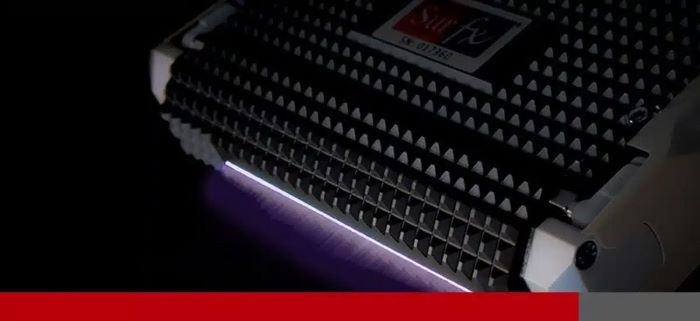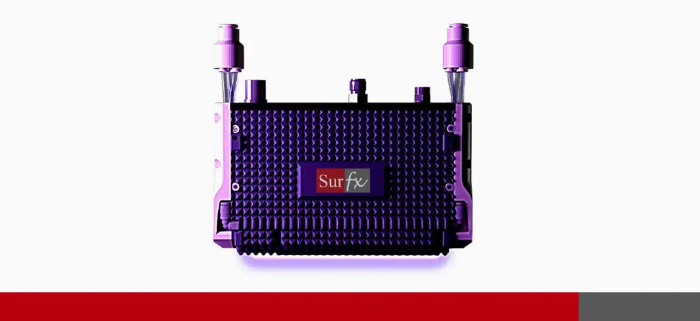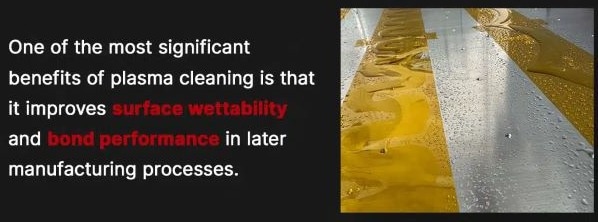Plasma cleaning is a safe, effective, and environmentally friendly method for surface preparation that is used in a wide range of manufacturing applications.

Image Credit: Surfx Technologies, LLC

Image Credit: Surfx Technologies, LLC
This method has increased in popularity, overtaking traditional surface cleaning methods due to its capacity to be seamlessly integrated into existing in-line processes without adding time or extra steps.
Plasma cleaning represents an ideal surface cleaning solution for any manufacturing operation that aims to streamline operational efficiency, reduce costs, and enhance product quality.
Understanding plasma cleaning and its benefits is crucial for those seeking to minimize contamination and explore a more effective and versatile alternative to traditional wet cleaning methods.
Common Uses of Plasma Cleaning
When employed after bulk cleaning, plasma cleaning is extremely effective in the removal of organic contaminants from substrates. The plasma cleaning process transforms a gas - for example, argon - into plasma via ionization in atmospheric conditions.
The resulting plasma cleans the substrate’s surface, ensuring it is free from microscopic contaminants that could adversely affect bonding and adhesion in secondary operations.
Plasma cleaning is a dry process with the capacity to clean and activate surfaces in a range of complex manufacturing scenarios. These characteristics make it an ideal method for a number of common applications.
Electronics
Plasma cleaning is used throughout the electronics industry to remove contaminants like organic residues from sensitive electronic components and printed circuit boards prior to assembly. This process is key to ensuring proper soldering and coating adhesion.
Semiconductors
The manufacture of microelectronics requires exceptionally high surface purity. Plasma cleaning is a key process in the preparation of semiconductor packaging, removing contamination and oxidation from bond pads while activating glass films ready for direct fusion bonding.
Medical Devices
Plasma cleaning is used for sterilizing medical devices before use. A key element of this process, plasma cleaning also enhances wetting to polymers and other materials, supporting the precision dispensation of biological media onto a range of surfaces.
Aerospace and Automotive
These high-precision industries are extremely reliant on consistent product quality. Plasma cleaning in this sector ensures thorough surface preparation for bonding and coating, as well as the provision of strong adhesion. All of these processes are key to improving product quality.
Understanding the Plasma Cleaning Process
Plasma cleaning involves the creation of plasma by applying an electric field or energy to a gas, which ionizes it into a combination of free electrons and ions.
Traditionally, plasma cleaning has been conducted in a vacuum chamber or a similarly controlled environment. In this setup, a gas such as argon, oxygen, hydrogen, or helium is introduced into the chamber before the electrical field or energy is applied.
Another established method is high-voltage atmospheric plasma, where energetic electrons and highly reactive radicals interact with the surface.
Both of these conventional plasma cleaning methods come with challenges. Vacuum plasma cleaning can potentially damage more delicate surfaces due to ion bombardment, while high-voltage atmospheric plasma can generate electrostatic discharge (ESD) events that may harm sensitive components like microelectronics and semiconductor wafers.
A newer and more innovative approach addresses these issues by generating argon plasma with an oxygen process gas mixture at atmospheric pressure. This method eliminates the need for a vacuum chamber and prevents the risks associated with high-voltage plasma and ESD.
Eight Benefits of Plasma Cleaning for Manufacturing Operations
There are significant advantages to adding plasma cleaning to existing manufacturing processes.
1. Highly Precise, Repeatable Results
High repeatability and precision are key considerations for industries like electronics, aerospace, and medical devices, where consistency and accuracy are essential. Plasma cleaning provides a baseline and uniform clean that can enhance quality and process control for downstream operations, such as bonding.
2. Enhanced Bond Performance

Image Credit: Surfx Technologies, LLC
A particularly noteworthy benefit of plasma cleaning is its potential to improve surface wettability and bond performance in later manufacturing processes.
The presence of contaminants can seriously interfere with bond interactions or adhesives. Ensuring that these contaminants are removed prior to bonding helps increase bond strength, which in turn improves a final product’s quality, yield, and life span. Clean surfaces also allow robust results to be achieved with less bond strength or pressure.
3. Reducing Waste
Contaminants often reduce wettability, which can result in coating or adhesive issues such as fish eyes or bubbling. These issues can, in turn, lead to reduced production yields and increased consumable costs.
The addition of plasma as a cleaning step enhances wettability, ultimately resulting in fewer scrapped products, lower consumable expenses, and improved performance in terms of the product’s coating and adhesive properties.
4. Maintaining Sustainable Processes and Minimizing Hazards
The chemicals used in cleaning processes are expensive and often pose a significant risk to operators. These processes are also prone to generating volatile organic compounds.
Plasma cleaning eliminates the need for these potentially harmful cleaning chemicals. In addition to offering superior results, plasma cleaning is also a dry and sustainable alternative to chemical cleaning, eliminating the cost and risk of storing and disposing of chemical waste.
Removing chemicals from cleaning processes also means that this method can be used with surfaces traditionally affected by solvent cleaning.
5. Improved Cleaning Effectiveness Without Impacting the Substrate Surface
Plasma cleaning does not alter the substrate’s bulk properties. It is also a far gentler method than other surface cleaning treatments, meaning that contaminants can be removed from a surface without losing any of the material’s essential properties.
Plasma cleaning's relatively non-aggressive nature also means that it is ideally suited for use with expensive or sensitive surfaces, such as glass, semiconductors, optical fiber, and metal.
6. Achieving Comprehensive Cleaning of All Surfaces
Using a plasma cleaning system, contaminants are thoroughly removed, and surfaces are effectively cleaned. This process is ideal for cleaning surfaces with recessed areas and other complex geometries.
7. Straightforward Integration into Existing Production Lines
Plasma cleaning solutions can be easily integrated into existing automated production lines, allowing users to save time and space while simultaneously increasing operational efficiency.
8. Reducing Costs
When compared to the cost of similar technologies, plasma cleaning requires a comparatively low equipment investment. This technique represents a cost-effective option for processes that are looking to maintain robust quality control while improving production throughput.
In the longer term, costs are also reduced due to a reduced number of faulty components and the elimination of the use, storage, and disposal of dangerous chemicals.
Plasma cleaning is also much more rapid than manual cleaning, further improving production times. The removal of impurities from surfaces prior to additional processing also reduces downtime, resulting in lower per-unit costs.
Benefits of Plasma Cleaning Technologies
Achieving success in manufacturing means embracing innovative technologies to improve both efficiency and product quality. Plasma cleaning is one such technology that brings significant benefits across a variety of industries and applications.
Surfx Technologies has revolutionized plasma cleaning technologies via its patented use of argon plasma coupled with an oxygen process gas mixture.
This approach is ideal for use with sensitive components in today’s demanding industries. Surfx Technologies’ innovative approach results in significantly higher product quality with extremely effective organic contaminant removal and reduced potential for parts or surface damage.
This process also supports continuous production, helping save time and money.
The company’s automatic plasma machines and products can help transform operations for manufacturers working with high-volume medical devices, electronic components, and automotive and aerospace electronics.
Acknowledgments
Produced from materials originally authored by Surfx Technologies.

This information has been sourced, reviewed and adapted from materials provided by Surfx Technologies, LLC.
For more information on this source, please visit Surfx Technologies, LLC.